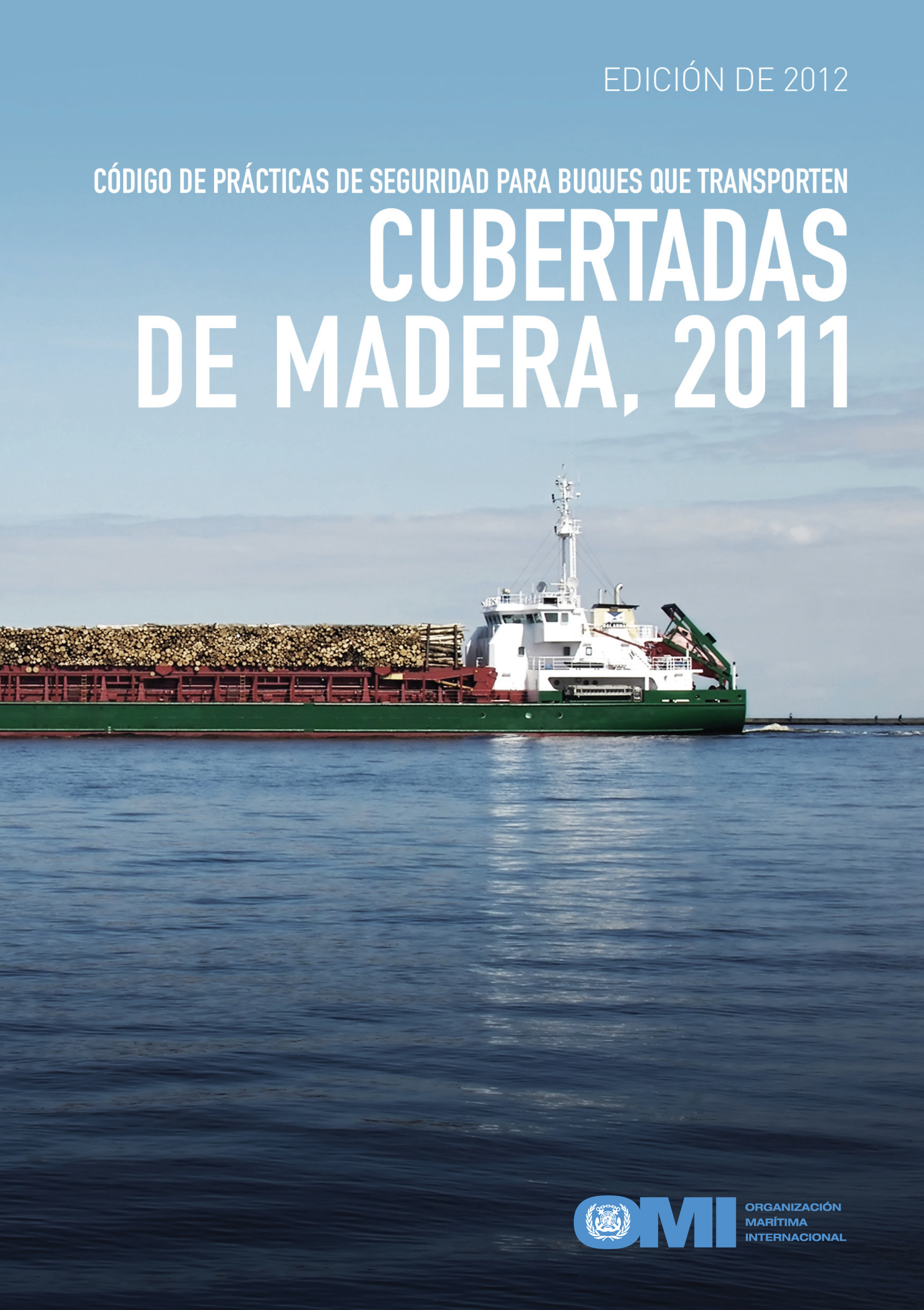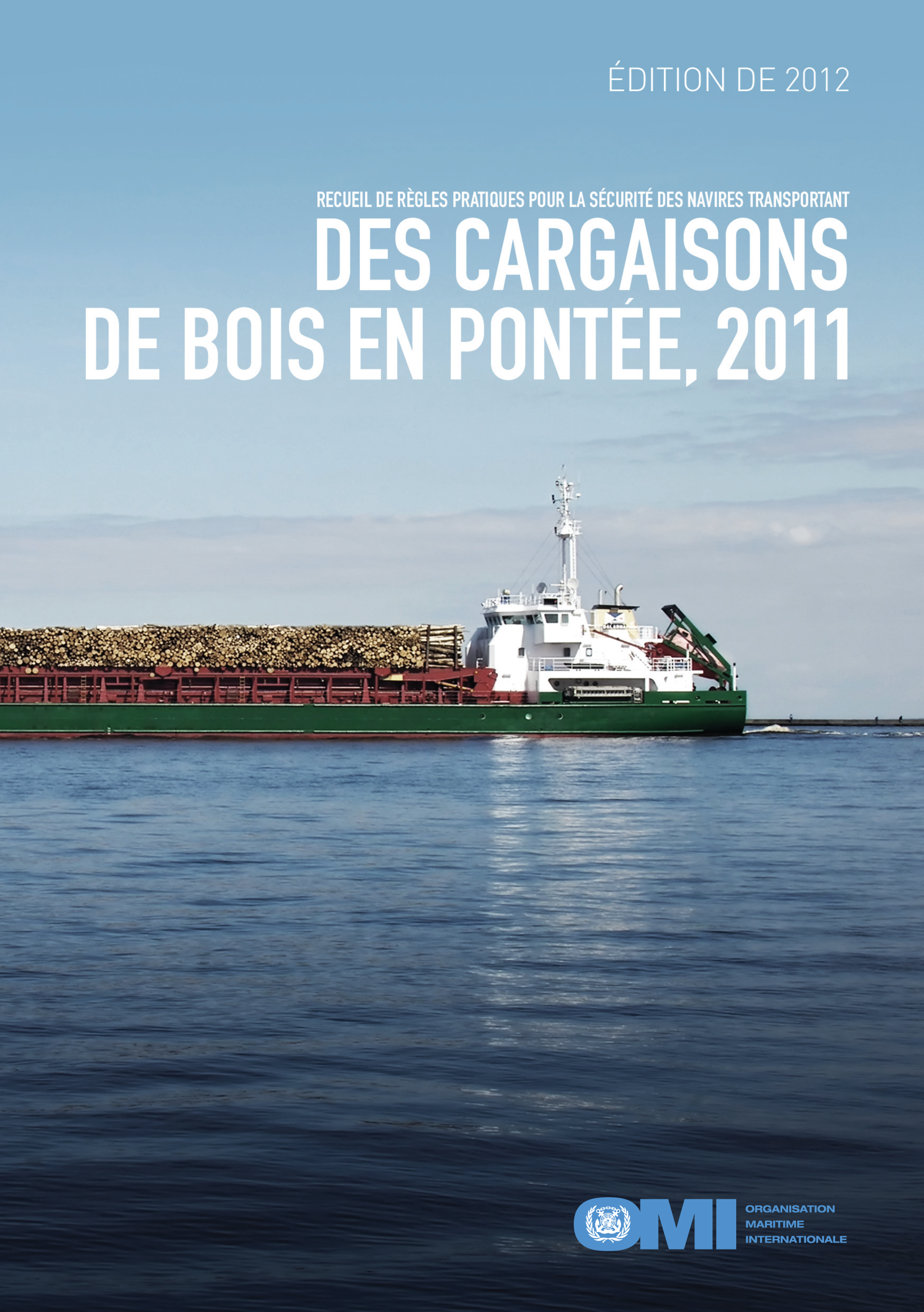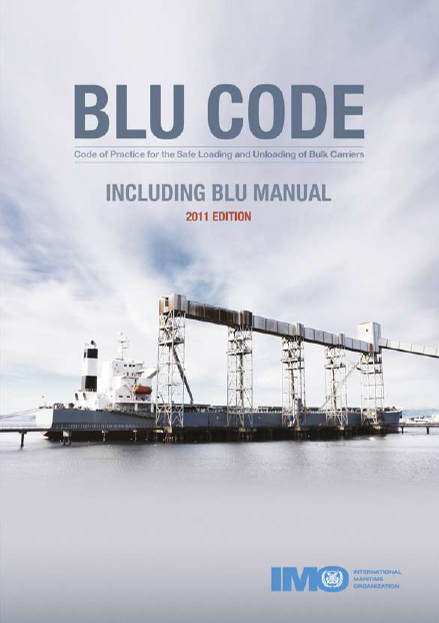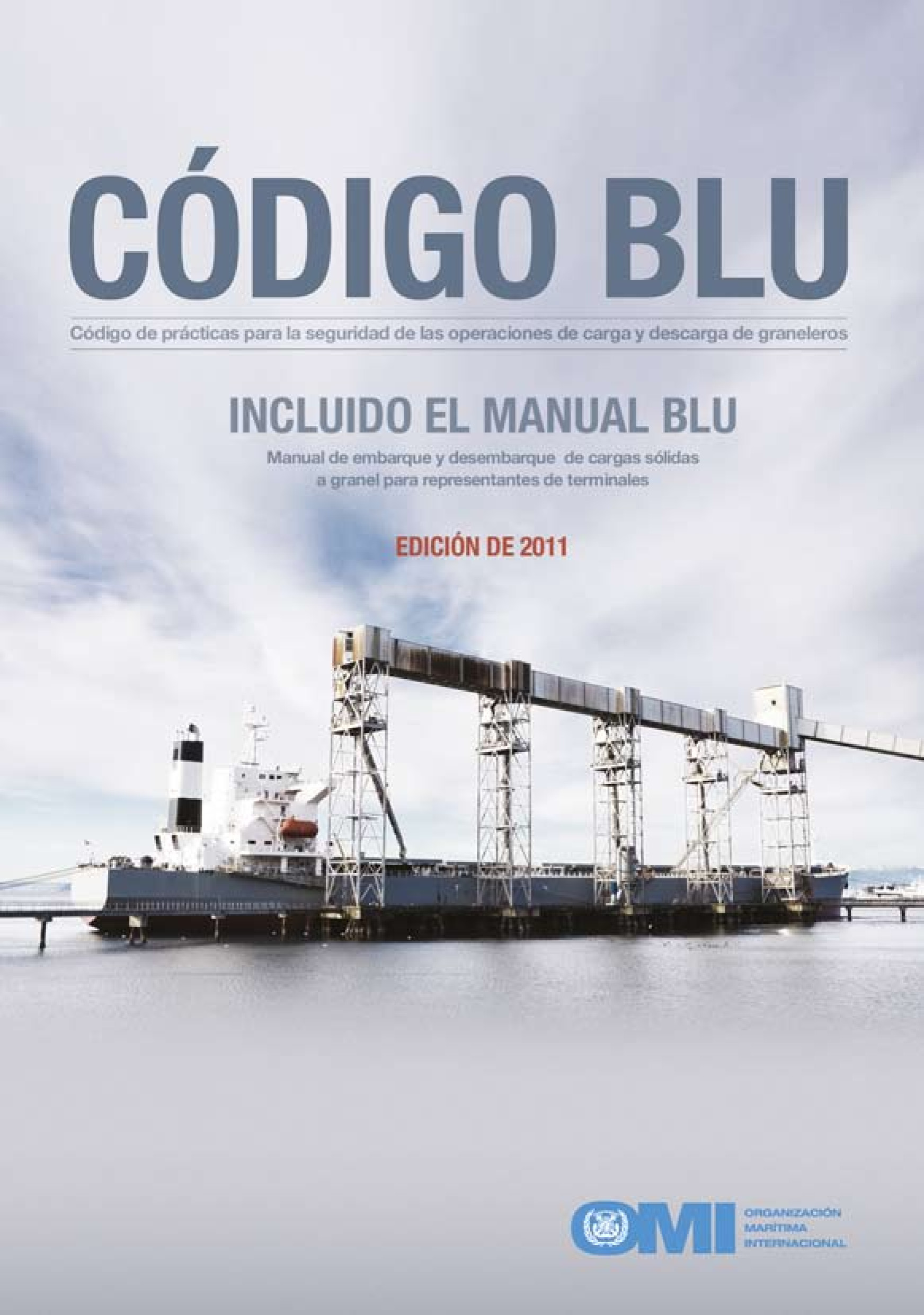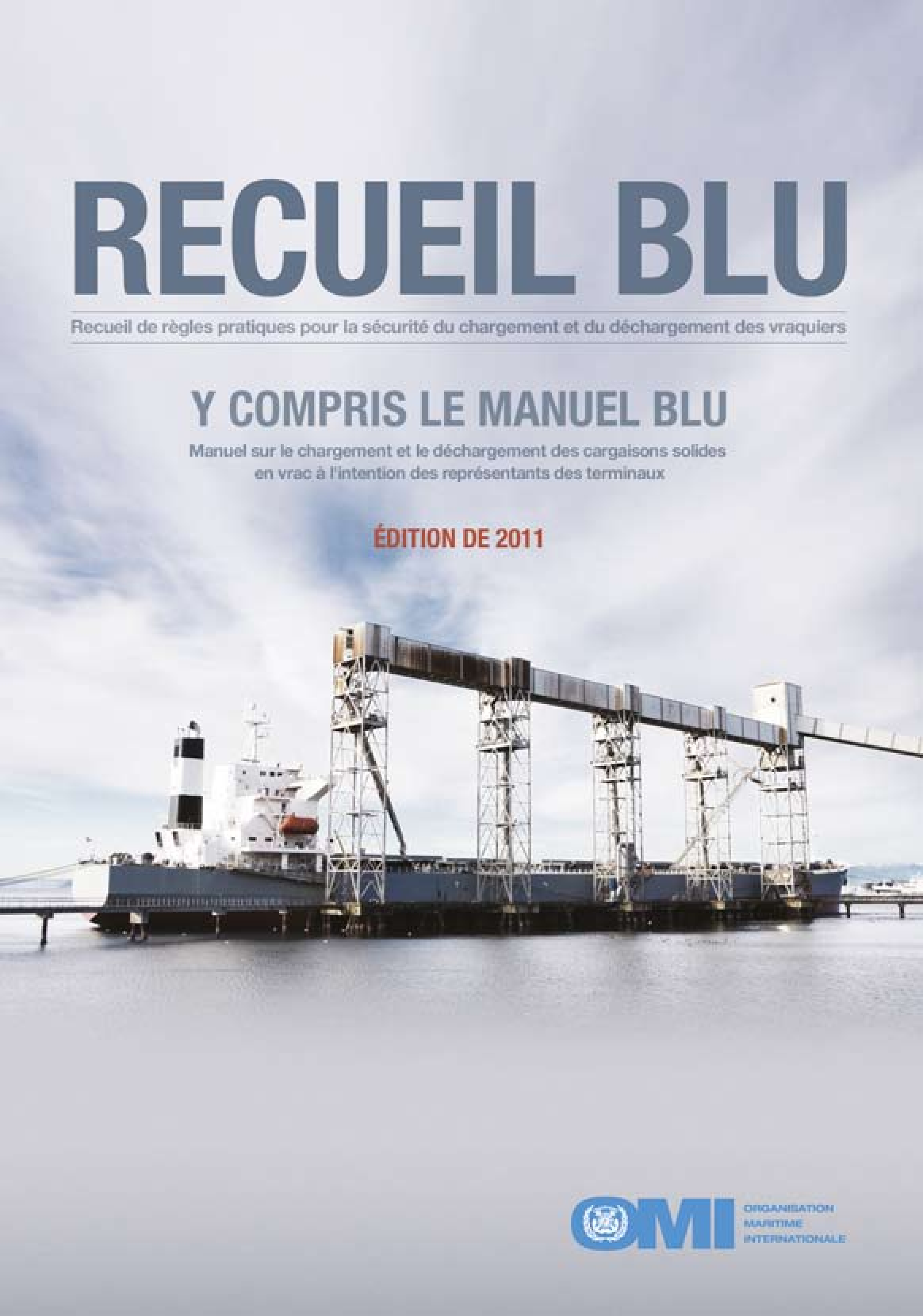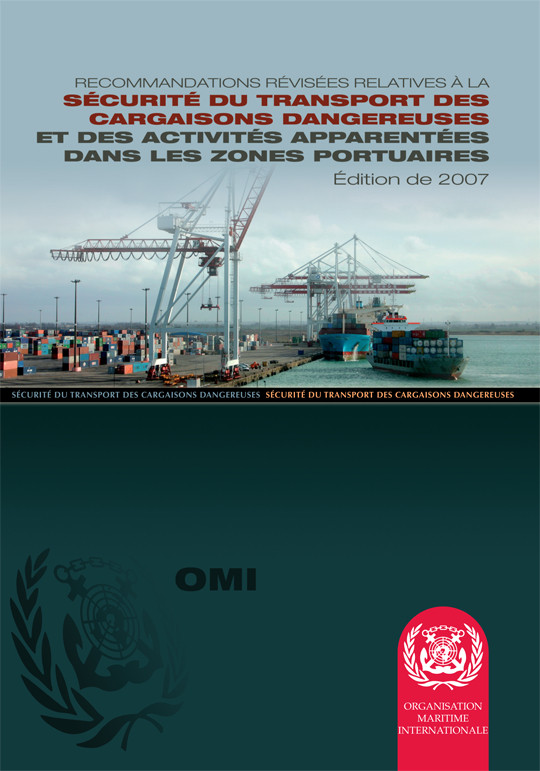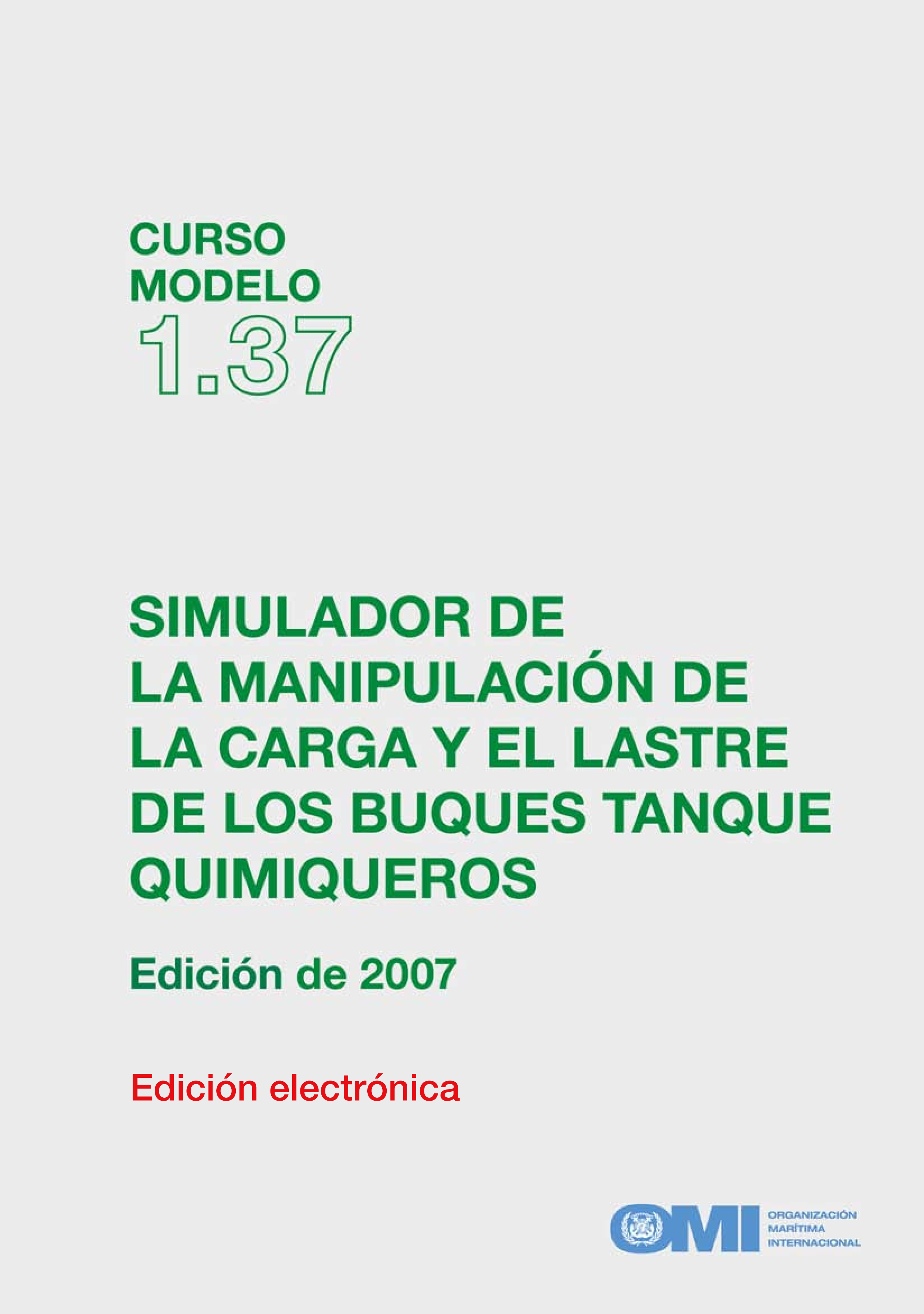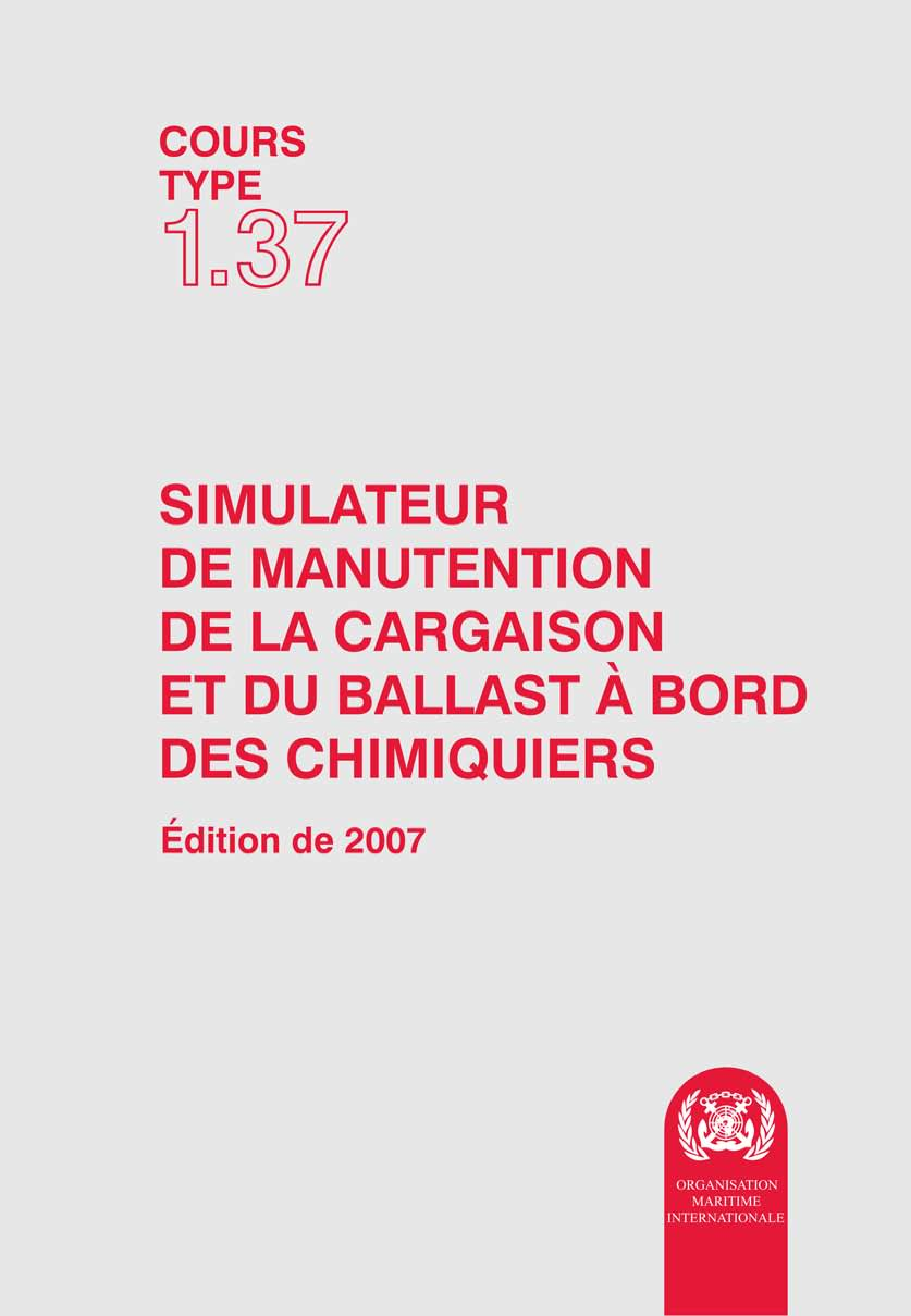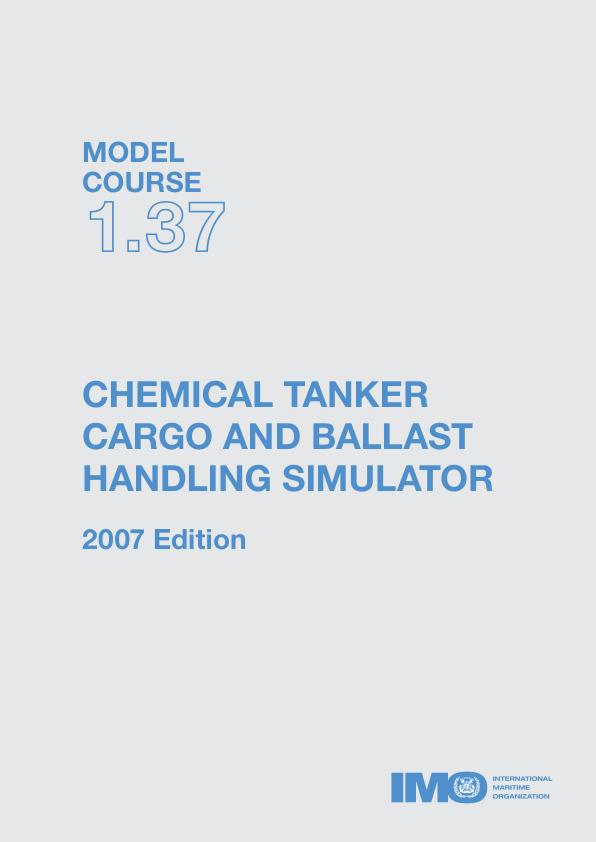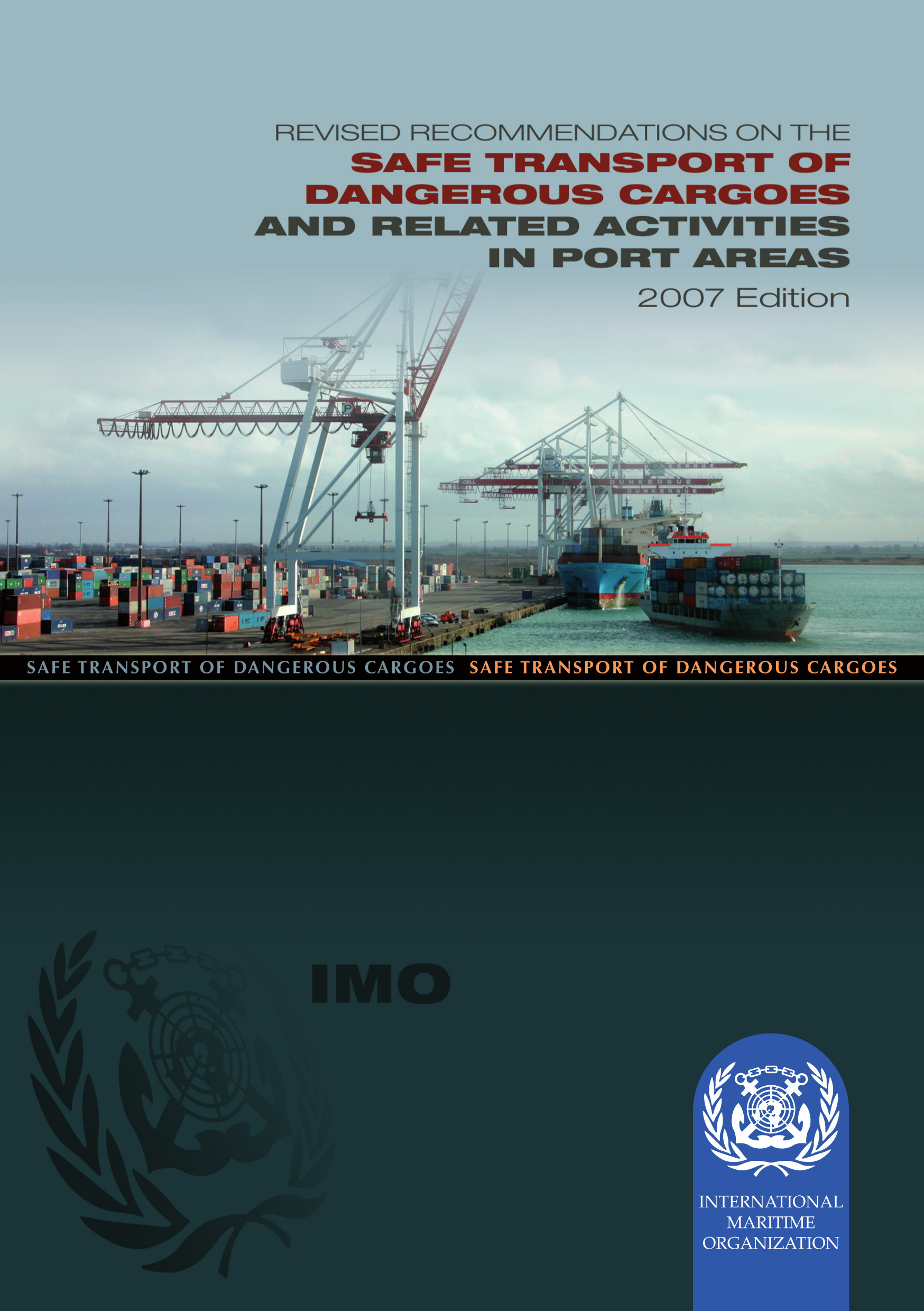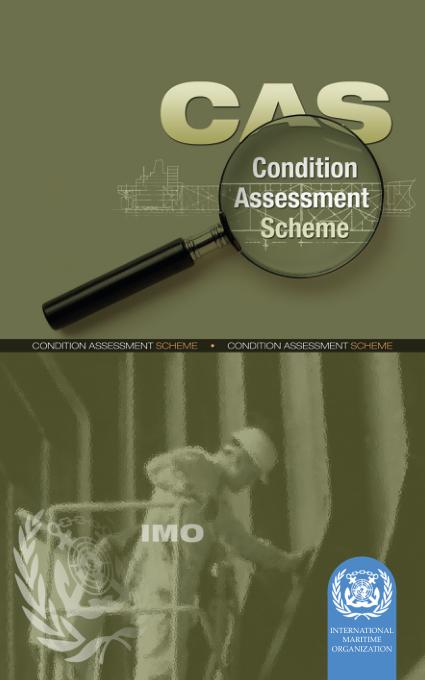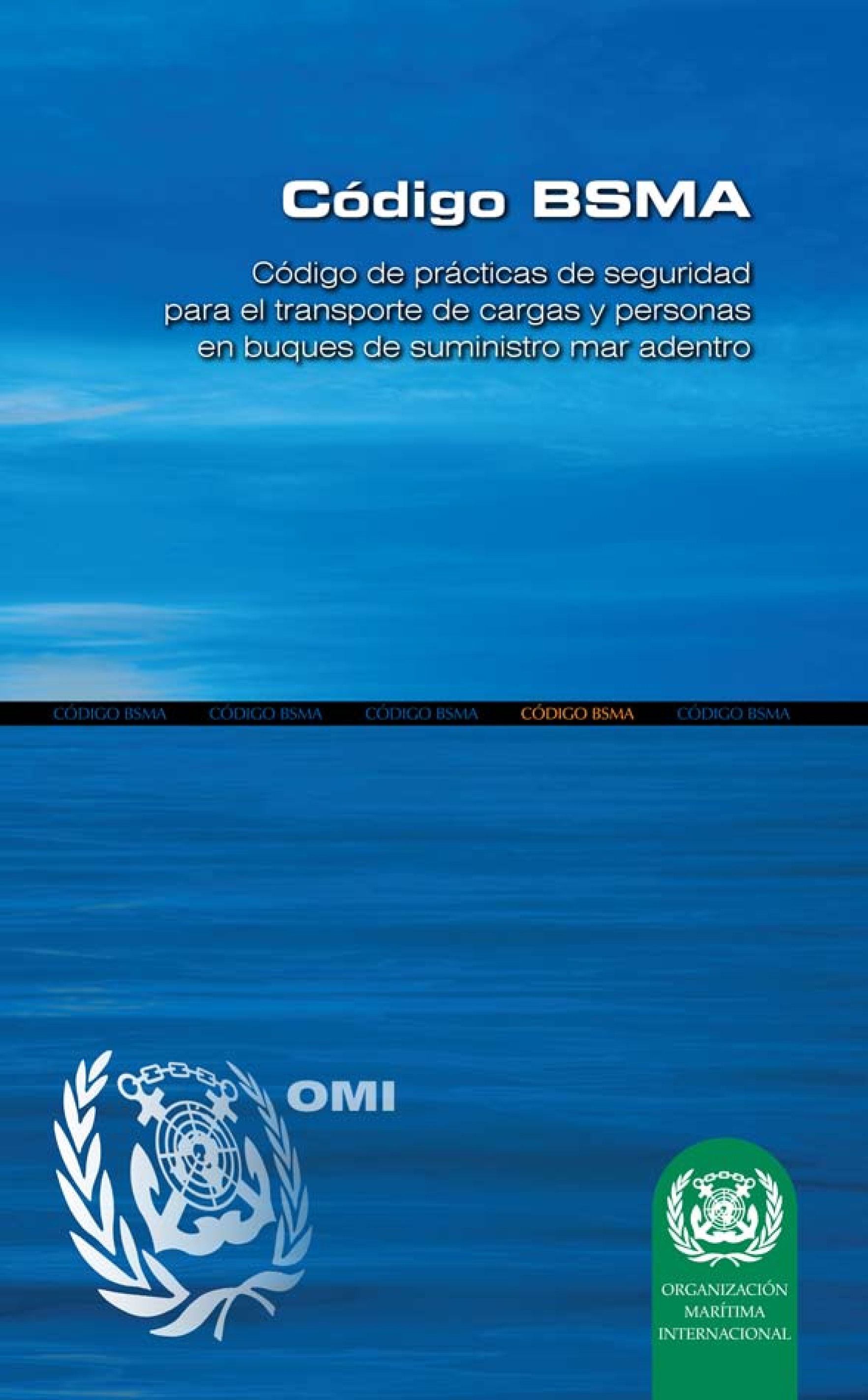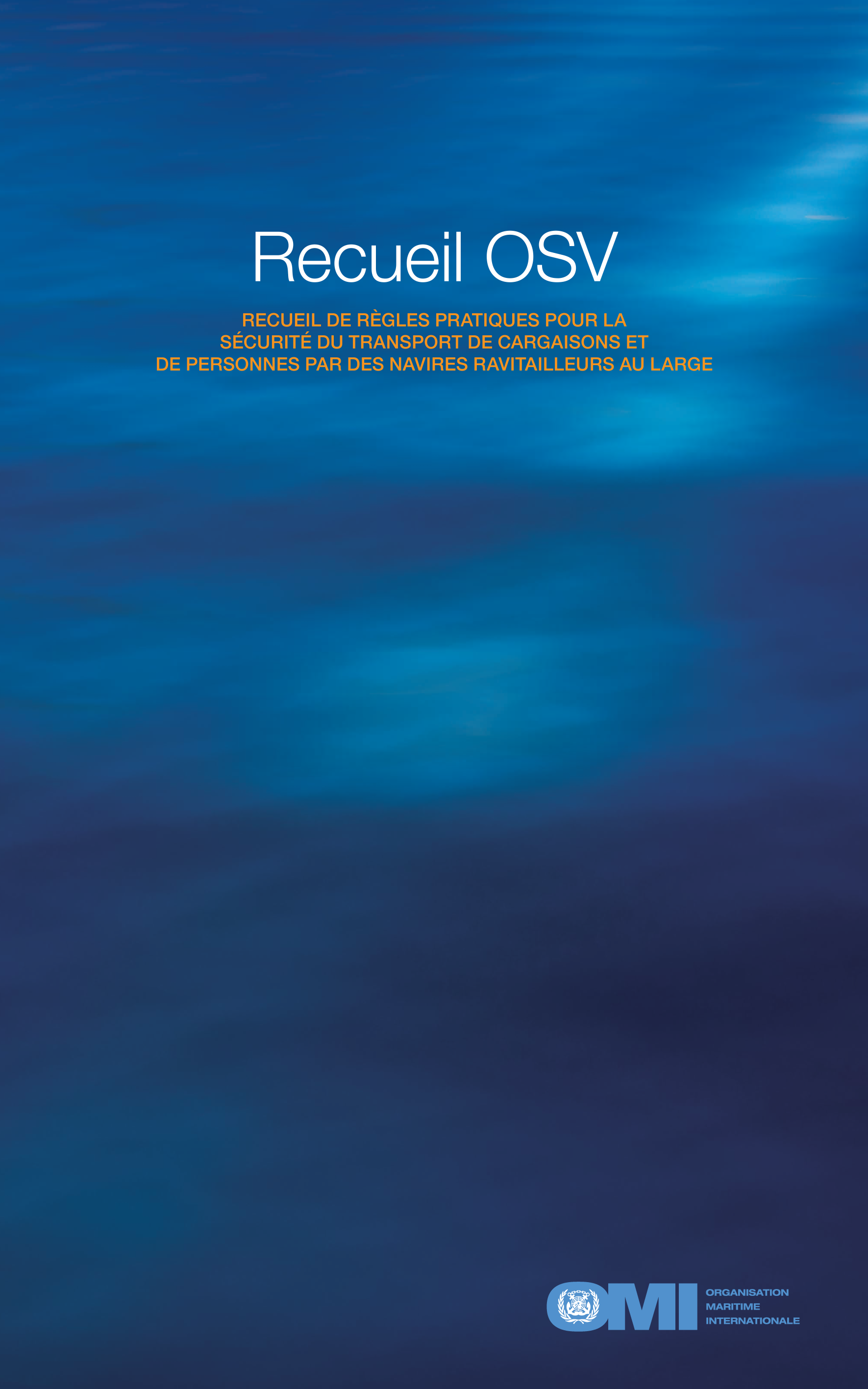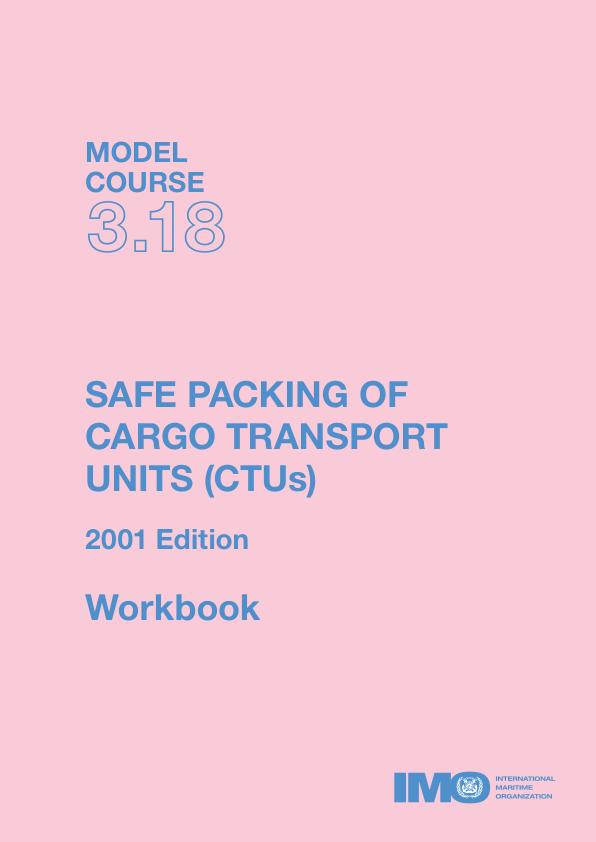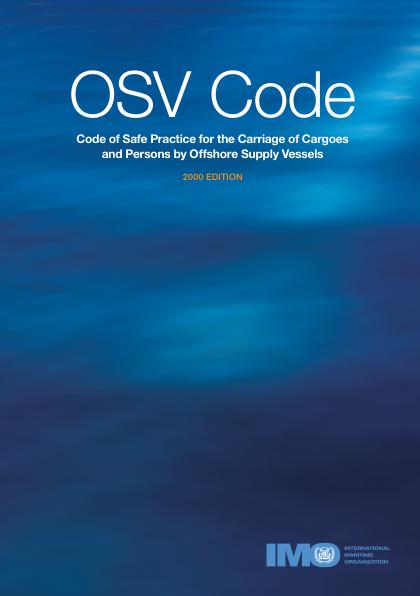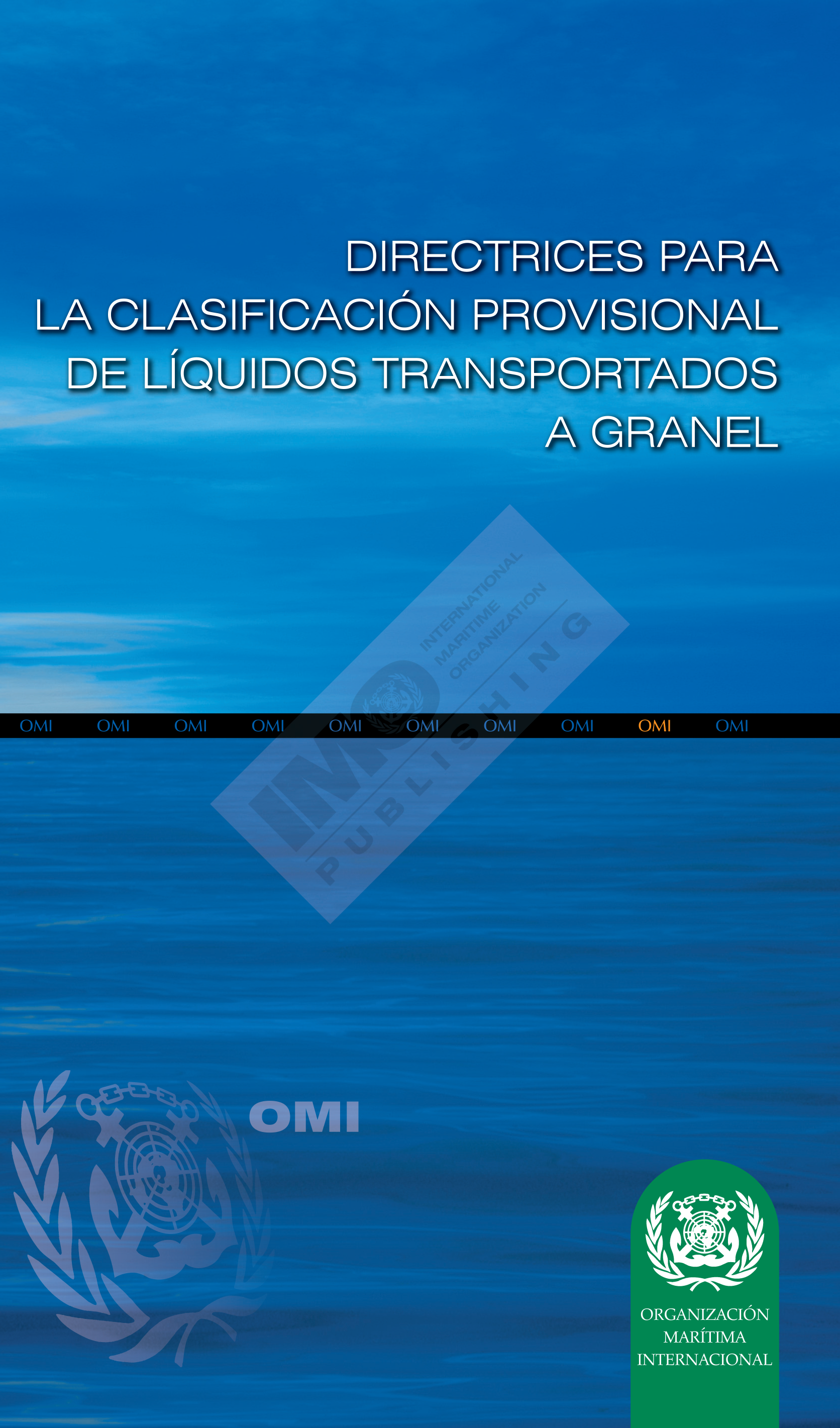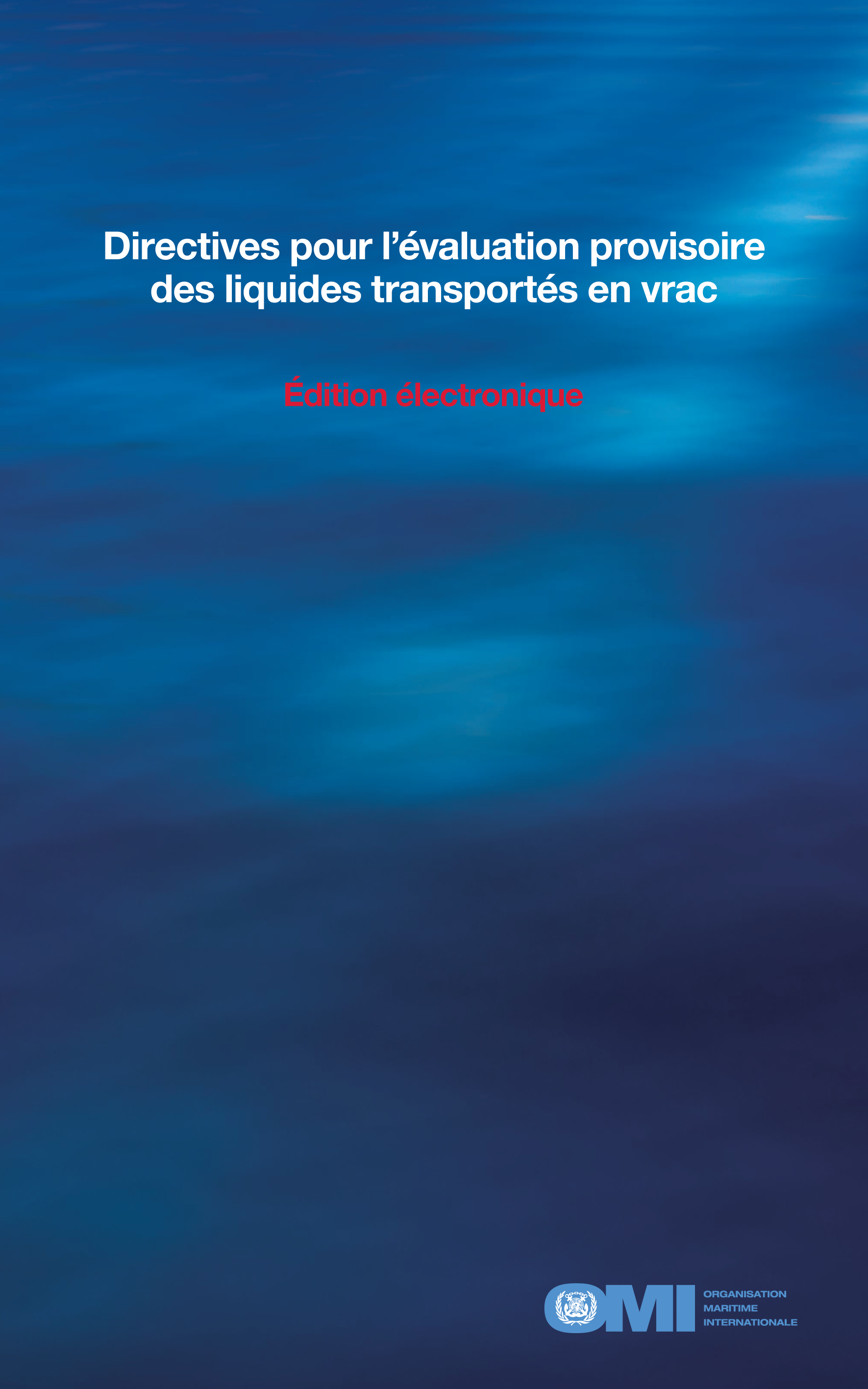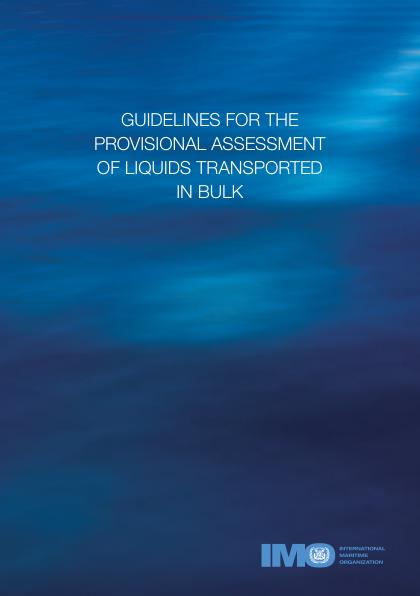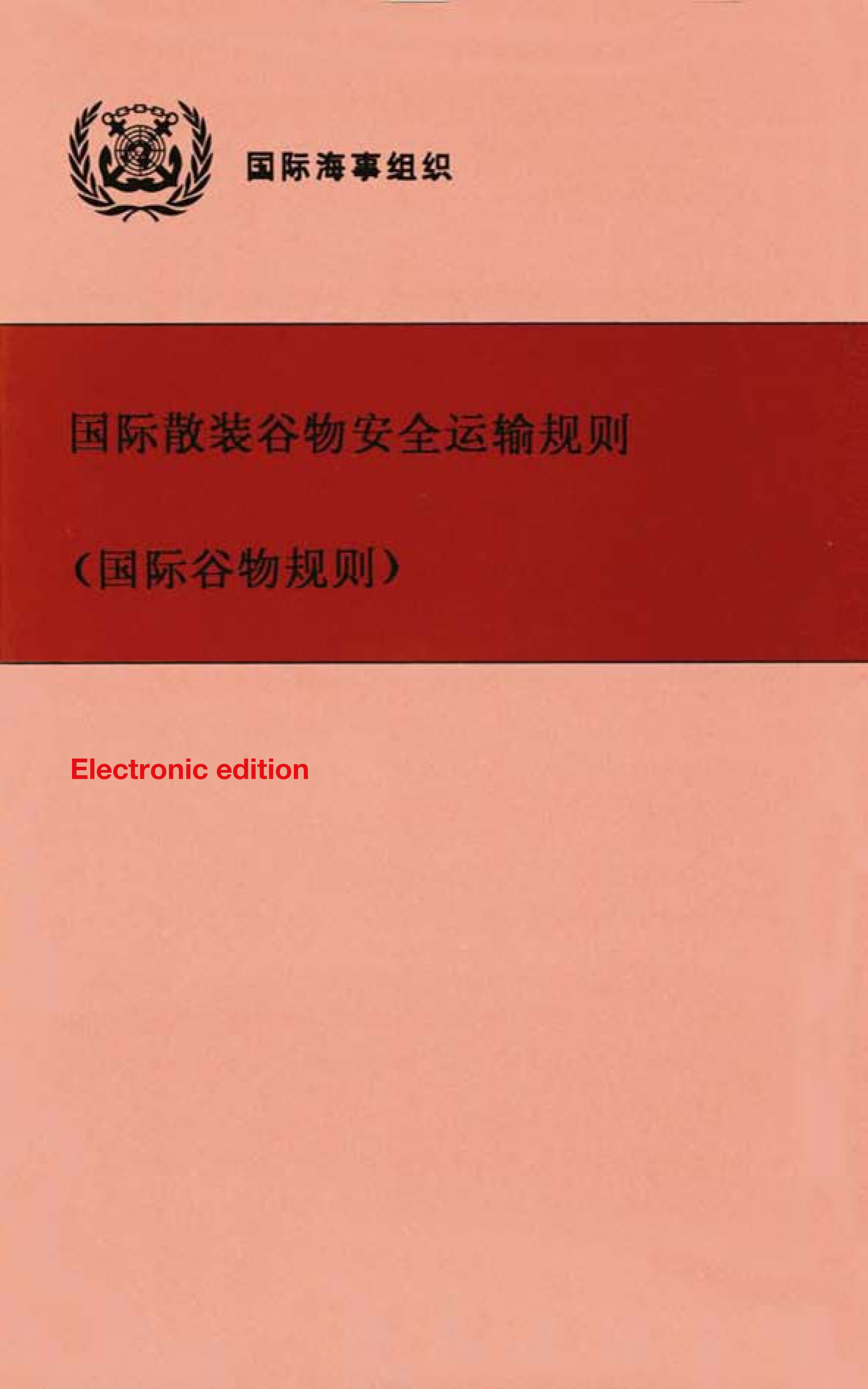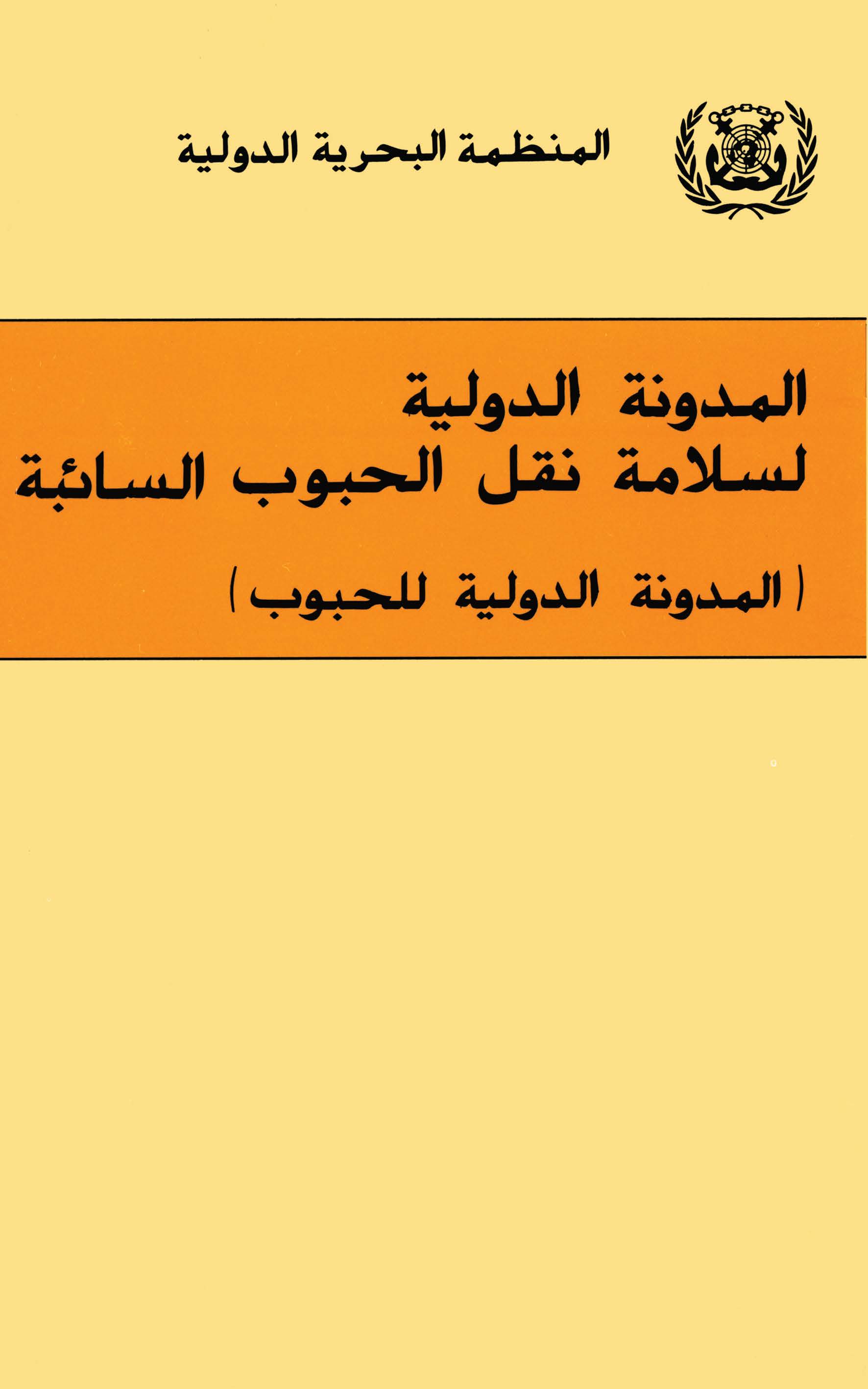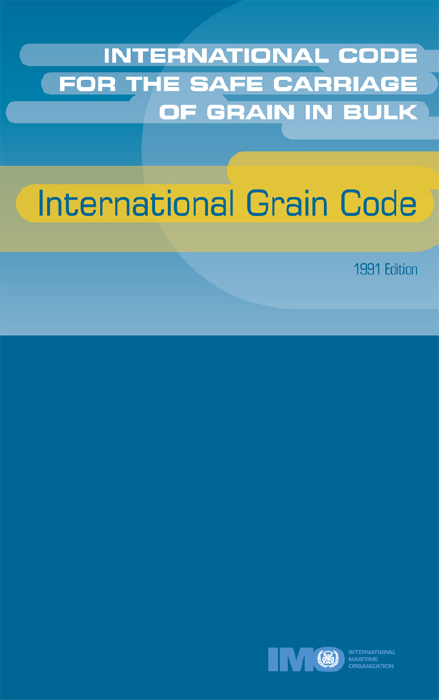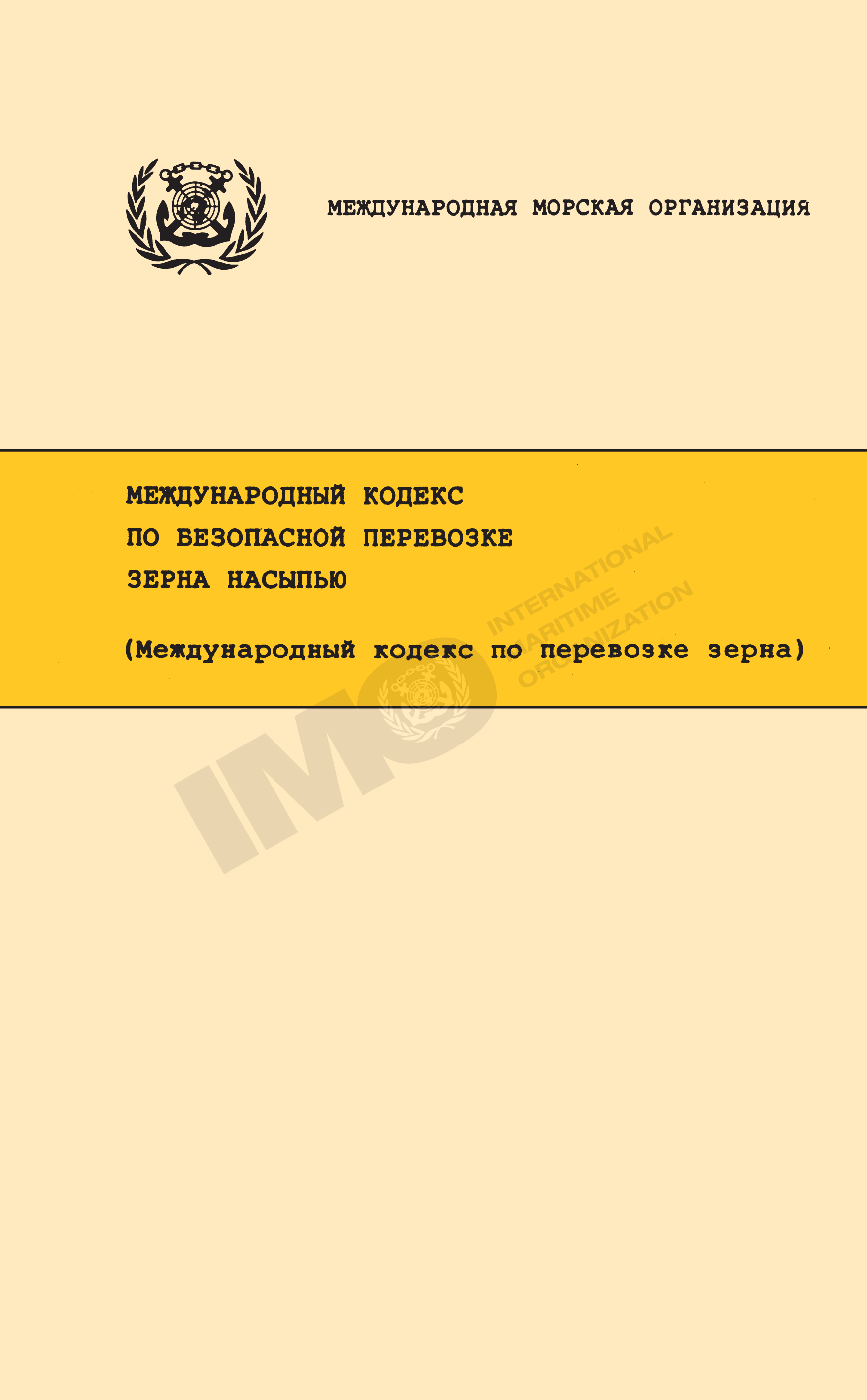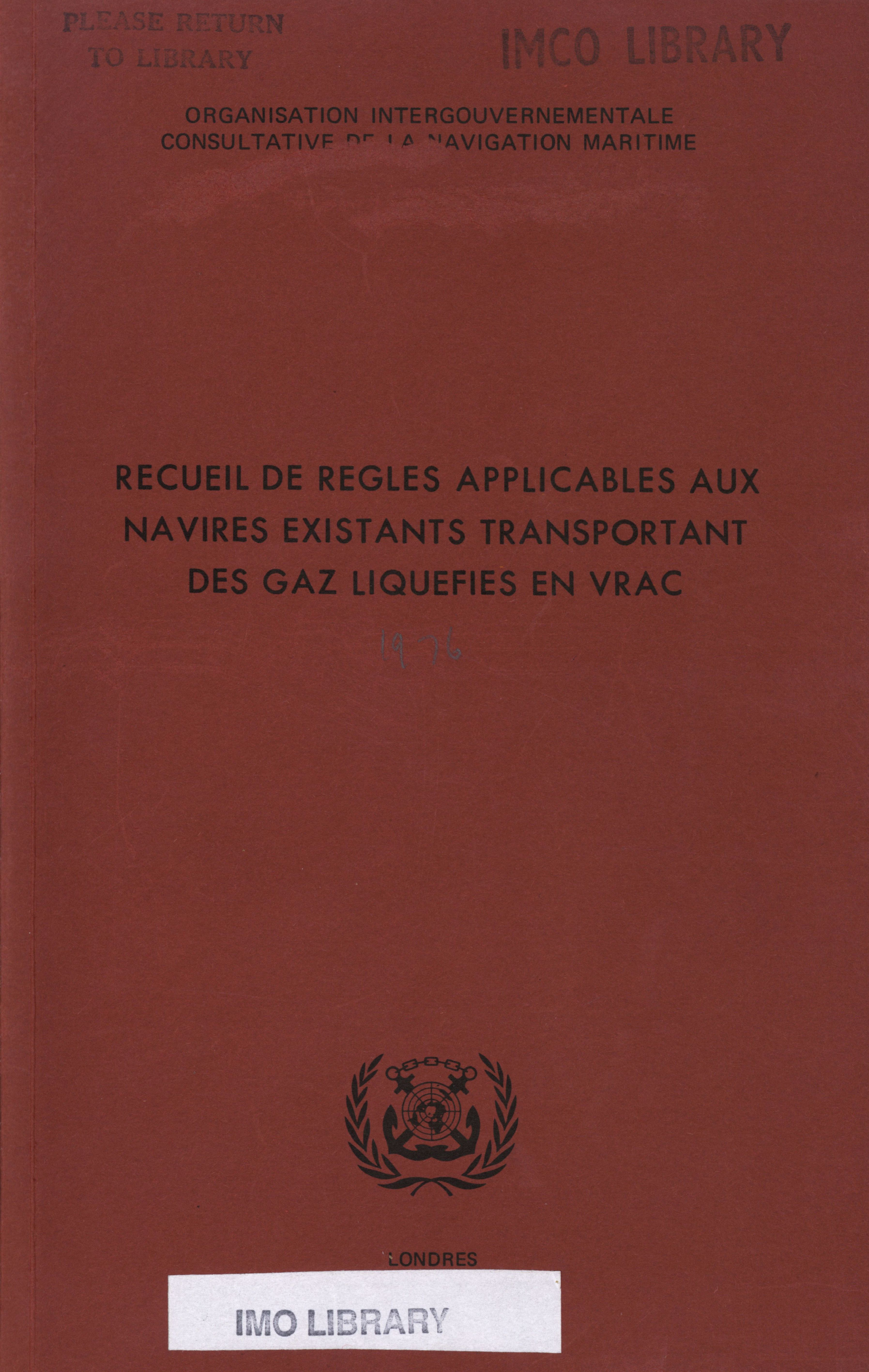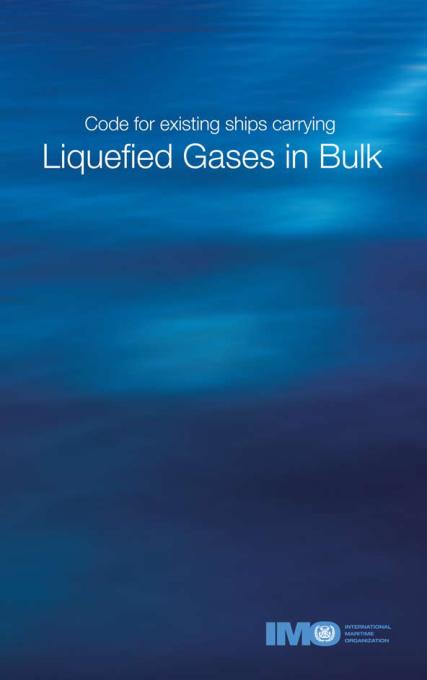Cargoes
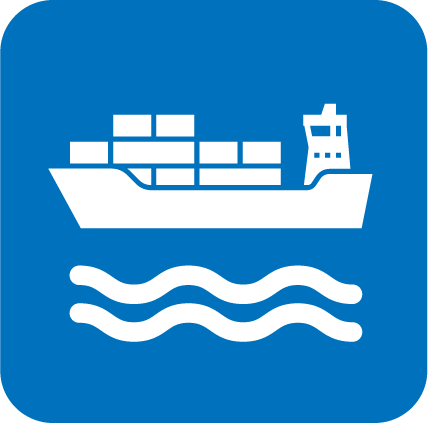
Collection Contents
51 - 78 of 78 results
-
-
Código de prácticas de seguridad para buques que transporten cubertadas de madera, 2011
More LessEl Código de prácticas de seguridad para buques que transporten cubertadas de madera, 2011 (Código TDC 2011) fue adoptado por la Asamblea de la OMI, en su vigésimo séptimo periodo de sesiones, en noviembre de 2011, mediante la resolución A.1048(27). Esta edición es una versión revisada y actualizada del anterior Código TDC adoptado mediante la resolución A.715(17).
El Código TDC 2011 no es obligatorio y se aplica a todos los buques de eslora igual o superior a 24 m dedicados al transporte de cubertadas de madera. El objetivo del Código es garantizar que los medios de estiba y sujeción de las cubertadas de madera permiten una sujeción segura y al mismo tiempo lógica de la carga, a fi n de evitar que ésta se desplace. El Código TDC 2011 también incluye principios de proyecto alternativos, teniendo en cuenta las aceleraciones que puede experimentar la carga durante la toda la travesía.
-
-
-
Recueil de règles pratiques pour la sécurité des navires transportant des cargaisons de bois en pontée, 2011
More LessLe Recueil de règles pratiques pour la sécurité des navires transportant des cargaisons de bois en pontée, 2011 (Recueil TDC de 2011) a été adopté par l’Assemblée de l’OMI, à sa vingt-septième session, en novembre 2011, par la résolution A.1048(27). La présente édition révisée actualise le Recueil TDC précédent, adopté en 1991 par la résolution A.715(17).
Le Recueil TDC de 2011 n’a pas force obligatoire et ses dispositions s’appliquent à tous les navires d’une longueur égale ou supérieure à 24 m qui transportent des cargaisons de bois en pontée. Il a pour objet de s’assurer que les dispositifs d’arrimage et d’assujettissement des cargaisons de bois en pontée permettent d’assujettir de manière sûre mais néanmoins rationnelle la cargaison, afi n de l’empêcher de riper. Le Recueil TDC de 2011 inclut également d’autres principes de conception, tenant compte des forces d’accélération que peut subir la cargaison pendant toute la durée du voyage.
-
-
-
BLU Code
More LessBLU Code including BLU Manual contains the Code of Practice for the Safe Loading and Unloading of Bulk Carriers, incorporating all amendments up to and including 2010, and the Manual on loading and unloading of solid bulk cargoes for terminal representatives, incorporating all amendments up to and including 2010. Also presented is Additional considerations for the safe loading of bulk carriers (MSC.1/Circ.1357).
-
-
-
Código BLU
More LessEsta edición del Código BLU incluye, además del propio Código, el Manual BLU e incorpora las enmiendas adoptadas hasta mayo de 2010.
Contiene:
- las enmiendas al Código BLU, adoptadas por el Comité de Seguridad Marítima en sus periodos de sesiones 82º y 87º celebrados en diciembre de 2006 y en mayo de 2010, respectivamente
- las enmiendas al Manual BLU, adoptadas por el Comité de Seguridad Marítima en su 87º periodo de sesiones en mayo de 2010, y
- consideraciones adicionales para la seguridad de las operaciones de carga de los graneleros, también aprobadas por el Comité de Seguridad Marítima en su 87º periodo de sesiones en mayo de 2010
-
-
-
Recueil BLU
More LessLa présente publication du Recueil BLU, y compris le Manuel BLU, renferme tous les amendements adoptés jusqu’en mai 2010.
Elle comprend entre autres :
- les amendements au Recueil BLU, adoptés par le Comité de la sécurité maritime, à ses quatre-vingtdeuxième et quatre-vingt-septième sessions, en décembre 2006 et en mai 2010, respectivement;
- les amendements au Manuel BLU, adoptés par le Comité de la sécurité maritime, à sa quatre-vingtseptième session, en mai 2010; et
- les autres aspects de la sécurité du chargement des vraquiers, approuvés par le Comité de la sécurité maritime, à sa quatre-vingt-septième session, en mai 2010.
-
-
-
Recomendaciones Revisadas sobre el Transporte sin Riesgos de Cargas Peligrosas y Actividades Conexas en Zonas Portuarias
More LessLa presente publicación comprende:
- un nuevo capítulo acerca de disposiciones sobre protección
- un nuevo anexo sobre fumigación en las zonas de carga
- un nuevo glosario de terminología correspondiente a la manipulación de cargas peligrosas
- recomendaciones actualizadas para el Código IMDG y demás códigos
-
-
-
Recommandations révisées relatives à la sécurité du transport des cargaisons dangereuses et des activités apparentées dans les zones portuaires
More LessLa présente publication contient:
- un nouveau chapitre intitulé "Dispositions concernant la sûreté"
- une nouvelle annexe sur la fumigation des tranches de la cargaison
- un nouveau glossaire des termes se rapportant à la manutention des cargaisons
- des recommandations actualisées pour le Code IMDG et d'autres recueils et codes
-
-
-
Simulador de la Manipulación de la Carga y el Lastre de los Buques Tanque Quimiqueros
More LessThe course is essentially a practical one, and consists of a series of exercises structured around the operation of the cargo and ballast installation of a chemical tanker and carried out in conjunction with a simulator.
-
-
-
Simulateur de Manutention de la Cargaison et du Ballast à Bord des Chimiquiers
More LessLe présent cours consiste essentiellement en une série d'exercices structurés autour de l'exploitation de l'installation de cargaison et de ballast d'un chimiquier et effectués sur un simulateur.
-
-
-
Chemical Tanker Cargo and Ballast Handling Simulator
More LessThe course is essentially a practical one, and consists of a series of exercises structured around the operation of the cargo and ballast installation of a chemical tanker and carried out in conjunction with a simulator.
-
-
-
Revised Recommendations on the Safe Transport of Dangerous Cargoes and Related Activities in Port Areas
More LessA Recommendation on Safe Practice on Dangerous goods in Ports and Harbours was first circulated by the Organization in November 1973. The subsequent development of new techniques in shore and ship operations, as well as the desirability of having more comprehensive recommendations which included Dangerous goods in packaged form, liquid and solid dangerous substances and liquefied gas carried in bulk, made it necessary to revise and update the Recommendation.
The revised Recommendations are aligned with relevant IMO codes and the IMDG Code in particular. It is considered essential to harmonize the rules within the port area with those applied to the ship in order to ensure smooth operations and to avoid misunderstandings between ship and shore. A non-exhaustive glossary of relevance to the handling of dangerous cargoes is given in appendix 1 of this publication.
-
-
-
CAS
More LessIn view of the revised MARPOL Annex I coming into force on 1 January 2007, as did the amendments to CAS by resolution MEPC.131(53), the purpose of this publication is to provide an easy reference to the up-to-date provisions of CAS, including incorporation of all of the amendments that have been adopted by the MEPC, up to and including the amendments adopted by resolution MEPC.131(53).
-
-
-
Safe Packing of Cargo Transport Units (CTUs)
More LessThis course provides basic training in the safe packing and securing of cargoes in cargo transport units.
-
-
-
Código BSMA
More LessThe purpose of the Code of Safe Practice for the Carriage of Cargoes and Persons by Offshore supply vessels (OSV Code), which was adopted by resolution A.863(20), is to provide, for both the operator and contractor, an international standard to avoid or to reduce to a minimum the hazards which affect Offshore supply vessels in their daily operation of carrying cargoes and persons from and between offshore installations. This standard should be considered when implementing a safety-management system within the meaning of paragraph 1.4 of the International Safety Management (ISM) Code.
-
-
-
Recueil OSV
More LessL'objet du Recueil de règles pratiques pour la sécurité du transport de cargaisons et de personnes par des navires ravitailleurs au large (Recueil OSV), adopté par la résolution A.863(20), est d'établir à l'intention de l'exploitant comme du contractant une norme internationale visant à éviter ou réduire au minimum les dangers auxquels sont quotidiennement exposés les navires ravitailleurs au large effectuant le transport de cargaisons et/ou de personnes à destination et en provenance des installations au large, ou entre entre celles-ci. Cette norme devrait être prise en considération lors de la mise en oeuvre d'un système de gestion de la sécurité selon les modalités prévues au paragraphe 1.4 du Code international de gestion de la sécurité (Code ISM) de l'OMI
-
-
-
Safe Packing of Cargo Transport Units (CTUs): Workbook
More LessWorkbook (sold separately), with quick lashing guides for transport on road and in sea areas A, B and C.
-
-
-
OSV Code
More LessThe purpose of the Code of Safe Practice for the Carriage of Cargoes and Persons by Offshore supply vessels (OSV Code), which was adopted by resolution A.863(20), is to provide, for both the operator and contractor, an international standard to avoid or to reduce to a minimum the hazards which affect Offshore supply vessels in their daily operation of carrying cargoes and persons from and between offshore installations. This standard should be considered when implementing a safety-management system within the meaning of paragraph 1.4 of the International Safety Management (ISM) Code.
-
-
-
Directrices para la clasificación provisional de líquidos transportados a granel
More LessThese Guidelines were approved in conjunction with the extension of the unified interpretation of regulation 3(4) of Annex II of MARPOL, which made it possible for Administrations to authorize manufacturers to carry out provisional assessments on IMO’s behalf. The Guidelines also provide step-by-step procedures for ascertaining the carriage requirements of all liquids offered for bulk carriage.
-
-
-
Directives pour l’évaluation provisoire des liquides transportés en vrac
More LessLes présentes Directives ont été approuvées en même temps que l'élargissement de l'Interprétation uniforme du paragraphe 4 de la règle 3 de l'Annexe II de la Convention MARPOL, qui a permis aux Autorités d'autoriser les fabricants à procéder à des évaluations provisoires au nom de l'OMI. Les Directives ont également permis d'établir, étape par étape, les procédures permettant de vérifier les prescriptions applicables au transport de tous les liquides destinés à être expédiés en vrac.
-
-
-
Guidelines for the Provisional Assessment of Liquids Transported in Bulk
More LessThese Guidelines were approved in conjunction with the extension of the unified interpretation of regulation 3(4) of Annex II of MARPOL, which made it possible for Administrations to authorize manufacturers to carry out provisional assessments on IMO’s behalf. The Guidelines also provide step- by-step procedures for ascertaining the carriage requirements of all liquids offered for bulk carriage.
-
-
-
国际谷物规则
More LessBy: 国际海事组织The Maritime safety Committee, at its fifty-ninth session (May 1991), adopted a new International Code for the Safe Carriage of Grain in Bulk (International Grain Code). This replaced the original chapter VI of SOLAS, which contained detailed regulations on the carriage of grain in bulk, with more general requirements and placed the detailed provisions on grain in a separate mandatory code.
-
-
-
ﺍﻟﻤﺪﻭﻧﺔ ﺍﻟﺪﻭﻟﻴﺔ ﻟﻠﺤﺒﻮﺏ
More Lessاعتمدت لجنة السلامة البحرية في دورتها الخمسين (أيار/مايو 1991)، المدونة الدولية الجديدة لسلامة نقل الحبوب السائبة (المدونة الدولية للحبوب). وحلت هذه المدونة محل الفصل VIالأصلي من اتفاقية سولاس الذي كان يتضمن لوائح تفصيلية بشأن نقل الحبوب السائبة واستعاضت عنها بمتطلبات ذات طابع أعم وأدرجت الأحكام التفصيلية المتعلقة بالحبوب في مدونة إلزامية منفصلة.
-
-
-
Código internacional para el transporte de grano
More LessThe Maritime safety Committee, at its fifty-ninth session (May 1991), adopted a new International Code for the Safe Carriage of Grain in Bulk (International Grain Code). This replaced the original chapter VI of SOLAS, which contained detailed regulations on the carriage of grain in bulk, with more general requirements and placed the detailed provisions on grain in a separate mandatory code.
-
-
-
Recueil international de règles sur les grains
More LessLe Comité de la sécurité maritime, lors de sa cinquante-neuvième session (mai 1991), a adopté un nouveau Recueil international de règles de sécurité pour le transport de grains en vrac (Recueil international de règles sur les grains). Le chapitre VI original de la Convention SOLAS de 1974, qui contenait des règles détaillées pour le transport de grains en vrac, a été remplacé par des prescriptions plus générales et des dispositions détaillées sur les grains ont été regroupées dans un recueil de règles obligatoires distinct.
-
-
-
International Grain Code
More LessThe Maritime Safety Committee, at its fifty-ninth session (May 1991), adopted a new International Code for the Safe Carriage of Grain in Bulk (International Grain Code). This replaced the original chapter VI of SOLAS, which contained detailed regulations on the carriage of grain in bulk, with more general requirements and placed the detailed provisions on grain in a separate mandatory code.
-
-
-
Международный Кодекс по Перебозке Зерна
More LessThe Maritime safety Committee, at its fifty-ninth session (May 1991), adopted a new International Code for the Safe Carriage of Grain in Bulk (International Grain Code). This replaced the original chapter VI of SOLAS, which contained detailed regulations on the carriage of grain in bulk, with more general requirements and placed the detailed provisions on grain in a separate mandatory code.
-
-
-
Recueil de Règles Applicables aux Navires Existants Transportant des Gaz Liquéfiés en Vrac
More LessLe présent Recueil a pour objet d'offrir des normes internationales relatives à la sécurité du transport des gaz liquéfiés en vrac par les navires, qui sont actuellement en service, ou qui, pour d'autres raisons, ne relèvent pas du champ d'application des normes plus complètes énoncées dans la résolution A.328(IX). Le Recueil s'applique généralement aux navires livrés avant le 31 décembre 1976. Y sont inclus, le supplément, le résumé des prescriptions minimales du Recueil et le supplément de 1980.
-
-
-
Code for Existing Ships Carrying Liquefied Gases in Bulk
More LessThe purpose of this Code is to provide international standards for the safe carriage of liquefied gases in bulk by ships which are currently in service, or which otherwise fall outside the scope of the more extensive standards contained in resolution A.328(IX). The Code generally applies to ships delivered before 31 December 1976. The supplement, Summary of Minimum Requirements of the Code and 1980 Supplement are included.
-

